Their normally pebble-textured skin has become smooth, their skin color changed from brick red to a sleek dark brown.
Note the tail of the newt at the center of this photo. It has become flattened to aid in swimming. In some instances, its dorsal will become wavy along its length.
These adaptations only occur during the breeding phase.
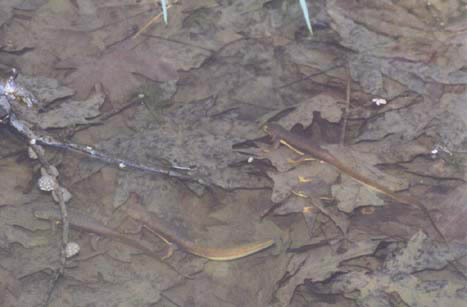
This
female California Newt is heavy with fertilized eggs.
She will search among the murky shallows until she finds a suitable
place to lay her eggs.
Note her color, she's remained red and her tail still looks much as
it does year round. She is easy to spot in the dark shallows and she
will not out swim the males.
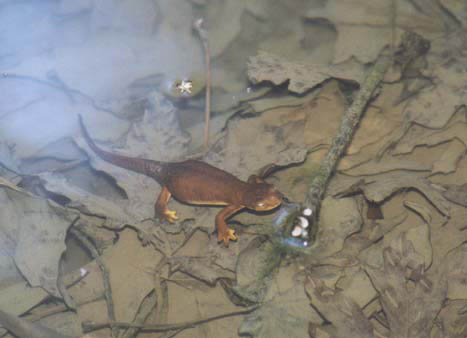
Oops.
Beyond the obvious, two things are worth noting. The tail of male newt
is ridged with small waves and its hind legs have thickened due to being waterlogged from having spent so much time in water. If too much water is absorbed, male newts run the risk of drowning.

uh
oh.
Pairing newts are sometimes joined by other males. At times the water
boils with frenzied activity as males vie for position.
Note the edge of the tail of the male in the center of the photo. It
is slightly wavy and its hind leg has grown thick.
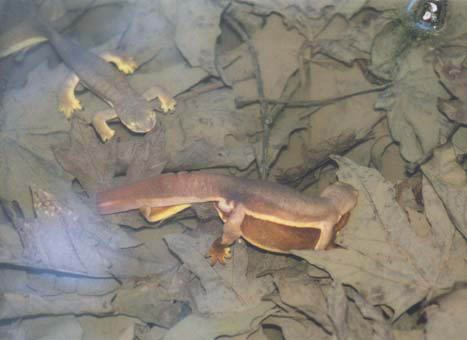
hey!
When a female newt has had enough, she's had enough. Unfortunately,
this is sometimes hard to communicate to the male newt.
In an attempt to hang onto her, the male will grip her more tightly
behind the front legs. He will bash his head against hers and generally
get rough.
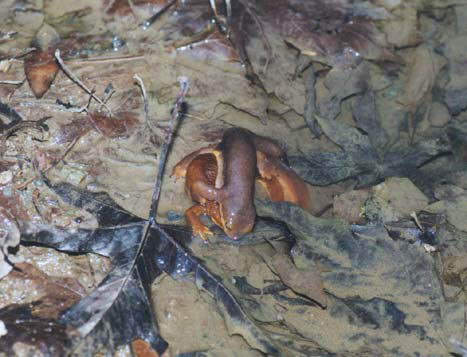
HEY!
Thrashing about, it almost appears as though this male is trying to
drown the female. Surprisingly, he does this to stimulate the female
who has sensitive zones just below the skin on the back of her head.
Mating mostly occurs underwater. While coupled, the pair glide around
the pool at various depths. Now and again, they surface for a quick
gulp of air before . . .
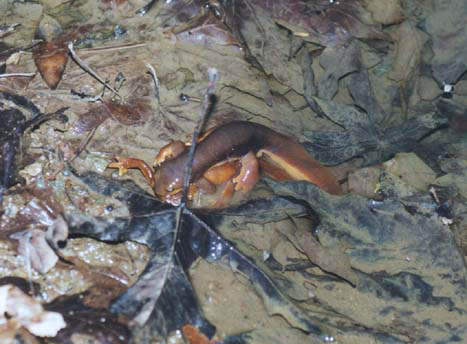
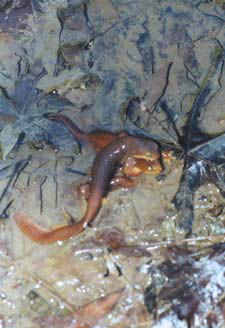
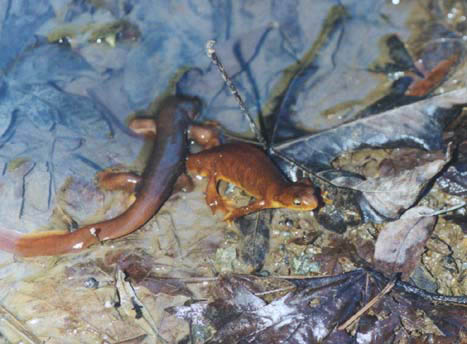
Even
after such an active encounter, this female appears to have plenty of
energy while the male looks nearly spent.
She was the only female observed escaping the embraces of a male. She
left the water and headed straight back to the forest.
Maybe to her,
a she-newt needs a he-newt like a fish needs a bicycle. . .
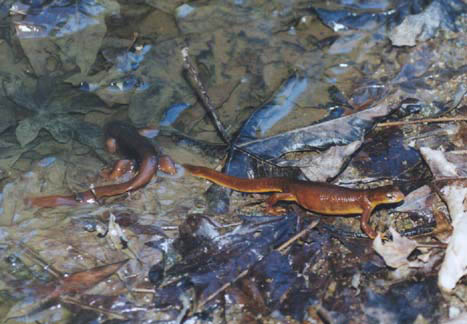
Preggers
. . .
Belly swelled with fertilized eggs, her tail marked by her encounters
with males. This female hangs motionless in the water.

Flee!
As a coupled pair, followed by another male in close pursuit, suddenly
swam beneath her, this little female came to life and quickly distanced
herself. (She looks as though she's swallowed a marble.)
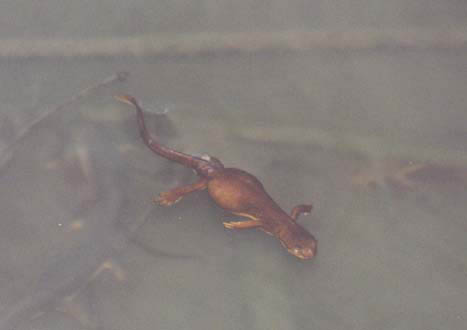
These two females have chosen a submerged tree branch as a place to lay their eggs. Eggs can be seen extruding from the female on the left. The female on the right is still getting into position.
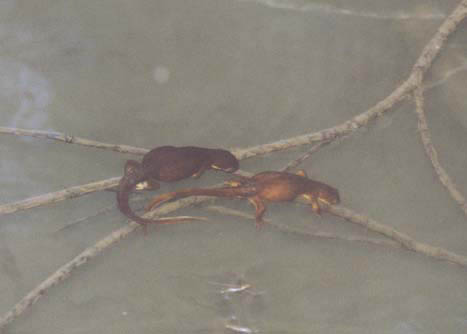
Here, two female newts have nearly completed laying their eggs. Note the other egg clusters along the submerged branch. Below them, a coupled pair glide through the murky shallows.
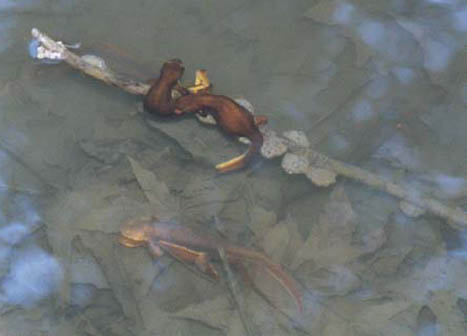
In this photograph, the egg laying technique is easily seen. Gripping the branch with both fore and hind legs, the female newt extrudes her eggs.

Exhausted by egg laying, this female hangs motionless from an egg-laden branch.
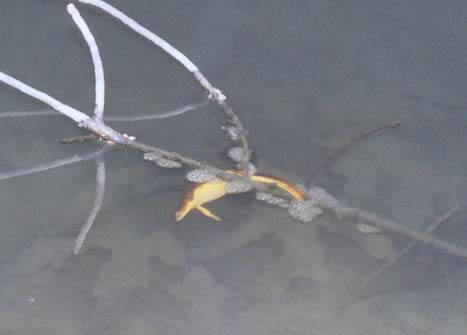
The photos shown here were gleaned from two rolls of 100ASA film shot 9 February 2002. The pool's location is intentionally omitted to protect the safety of the newts.
Photography conditions were extremely poor. The pool is in such deep shade that a flash attachment must be used. Between 30 and 50 pairs of newts were active in the pool. Most activity took place at a distance, a Minolta XG9 with a 50mm lens with macro was used to capture the action.
